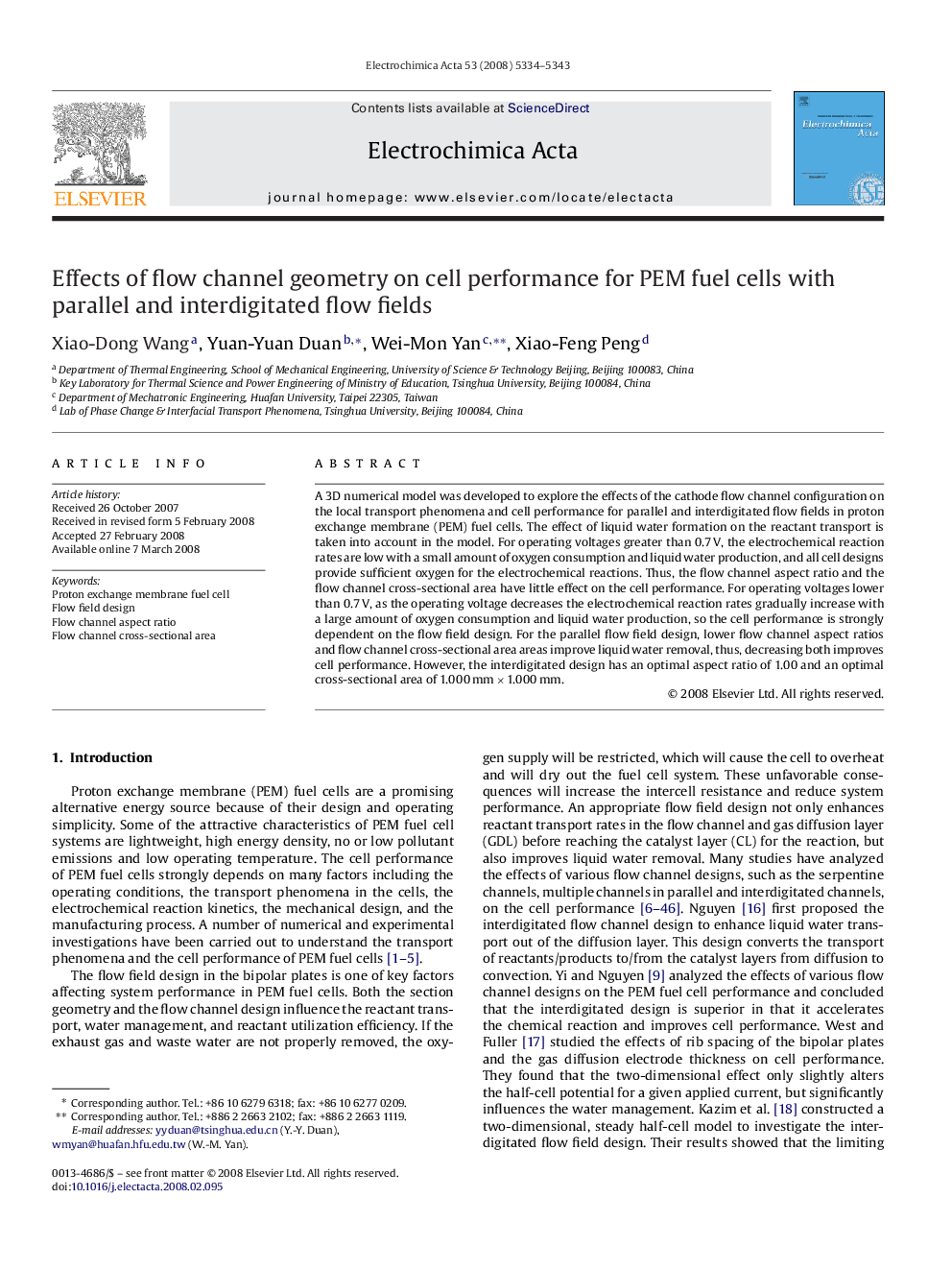| Article ID | Journal | Published Year | Pages | File Type |
|---|---|---|---|---|
| 192294 | Electrochimica Acta | 2008 | 10 Pages |
A 3D numerical model was developed to explore the effects of the cathode flow channel configuration on the local transport phenomena and cell performance for parallel and interdigitated flow fields in proton exchange membrane (PEM) fuel cells. The effect of liquid water formation on the reactant transport is taken into account in the model. For operating voltages greater than 0.7 V, the electrochemical reaction rates are low with a small amount of oxygen consumption and liquid water production, and all cell designs provide sufficient oxygen for the electrochemical reactions. Thus, the flow channel aspect ratio and the flow channel cross-sectional area have little effect on the cell performance. For operating voltages lower than 0.7 V, as the operating voltage decreases the electrochemical reaction rates gradually increase with a large amount of oxygen consumption and liquid water production, so the cell performance is strongly dependent on the flow field design. For the parallel flow field design, lower flow channel aspect ratios and flow channel cross-sectional area areas improve liquid water removal, thus, decreasing both improves cell performance. However, the interdigitated design has an optimal aspect ratio of 1.00 and an optimal cross-sectional area of 1.000 mm × 1.000 mm.
